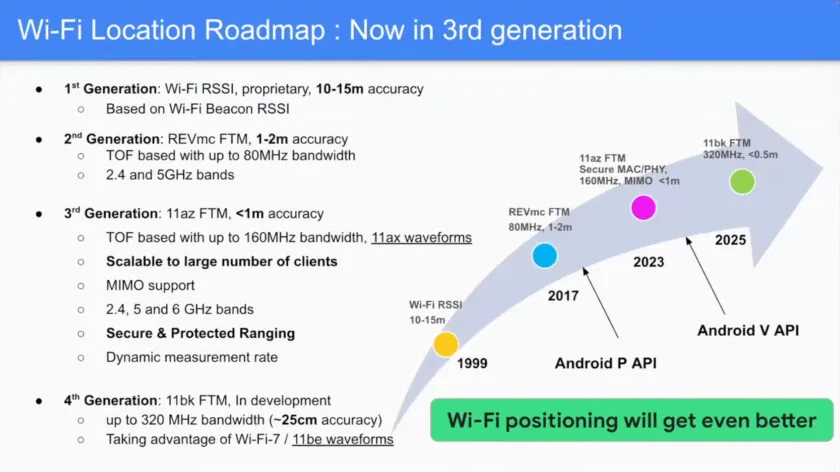According to AndroidAuthority, Google’s upcoming Android 15 system will introduce Wi-Fi Ranging (Wi-Fi ranging) technology, which is expected to significantly improve the accuracy of indoor positioning.
According to Igeekphone, GPS technology has always had low positioning accuracy in indoor environments, because indoor buildings block satellite signals. Wi-Fi signals are relatively stable in indoor environments, so they can be used for indoor positioning. However, traditional Wi-Fi location technology relies mainly on signal strength (RSS) to estimate the location of the device, usually with an accuracy of around 10-15 meters. Wi-Fi RTT (Round Trip Time) technology measures the Time of flight (ToF) of radio signals to achieve more accurate positioning, with an accuracy of 1-2 meters.

The latest Wi-Fi Ranging technology has further improved on this basis, with accuracy up to 0.4 meters. The technology not only supports higher bandwidth and faster transmission speed, but also has stronger security, higher reliability and better scalability.
Android 15’s Wi-Fi Ranging feature will be combined with the 802.11az standard to further improve location accuracy, extend the band, improve security, and support dynamic measurement rates.

Wi-Fi Ranging technology can not only improve the accuracy of indoor navigation, but also play an important role in smart home, retail and other fields. For example, users can more precisely locate items in a mall, and smart home devices can automatically adjust Settings based on the user’s location.
Although Wi-Fi Ranging technology is relatively mature, its large-scale application still needs hardware and software support. Some of the latest Wi-Fi chips already support the technology, and Wi-Fi access points require firmware upgrades to work with it.









